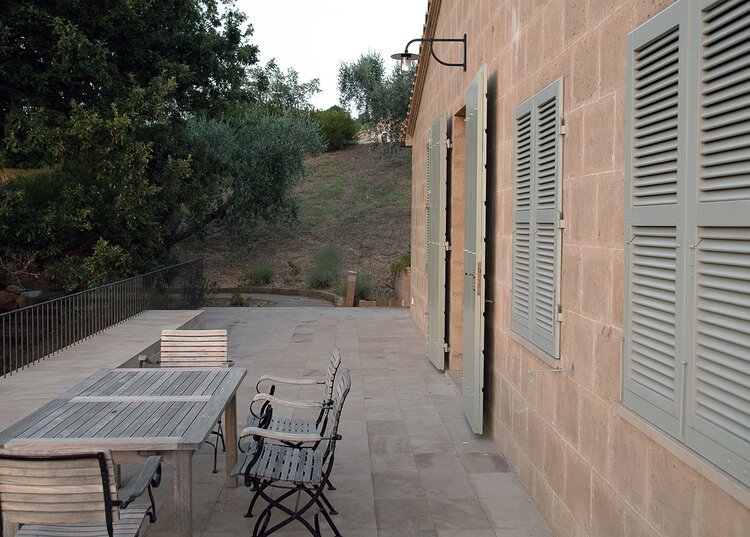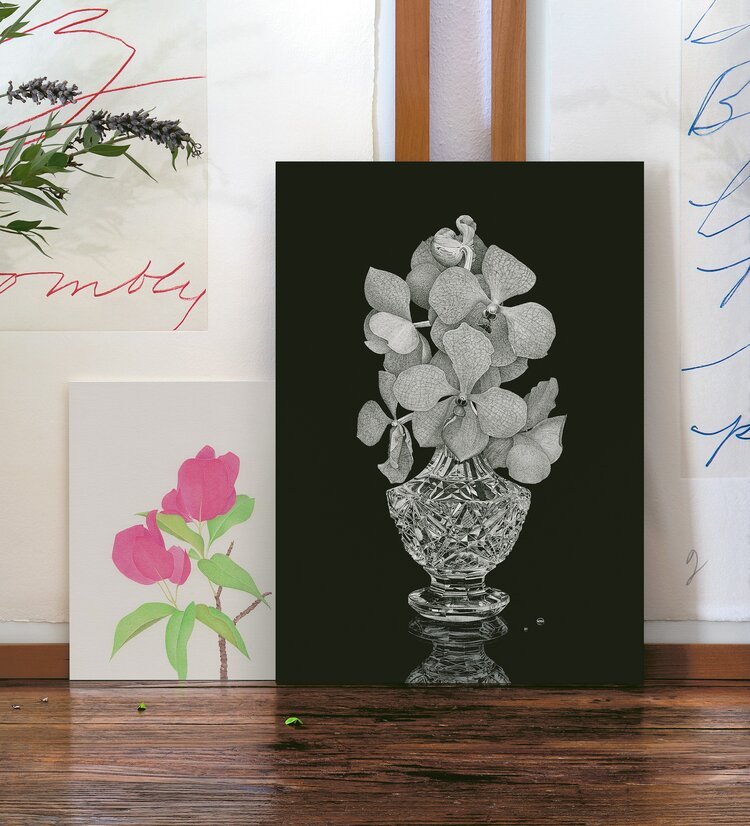Thilo Westermann
Maremma Residency Toscana, Italy, July 2017
„Bougainvillea“ and „Vanda Coerulea“ at a collector’s house, Maremma 2016 (2017, Pigment print on archival paper, diasec, 39.4 x 36.2 in, ed. 1 of 3+2, Collection of the MMKK Museum Moderner Kunst Kaernten © VG Wort)
Photography: Thilo Westermann
Words: Martin Thierer
Collection of the MMKK Museum Moderner Kunst Kaernten
“Thilo Westermann is a conceptual artist known for his black and white reverse glass paintings. He creates his images by first blackening the reverse side of a sheet of glass and then scratching his motifs, dot by dot, from the blackened layer with a needle. After finishing a painting, Westermann scans and prints it six times larger than scale in a single “unique copy print”. As though under a magnifying glass, the dots making up the image become noticeable revealing his handicraft.
In his large-scale photomontages, Westermann documents interiors using a multitude of close-up pictures, from which he digitally reconstructs the atmosphere in the way he experienced it in situ. Through this process, the actual settings meld with personal associations and scientific research. Even the minutest detail is significant in these photomontages and it is evident that the artist sometimes presents his own works within a framework of relations, in the context of which he wants them to be understood und discussed. For example in the stage-like setting of his photomontage ““Bougainvillea” and “Vanda Coerulea” at a collector’s house, Maremma 2016”, Westermann presents both of his works mentioned in the neutral title as if they were leaning in front of two larger framed works, only parts of which are visible. These are two prints by Cy Twombly, who’s prominent signature is visible in the left-hand frame. From above a delicate sprig of lavender – probably placed in a vase further to the left – protrudes into the picture. It marvelously corresponds with the subtle lines of Twombly’s print, its shadow seemingly becoming a part of it. In front of the art works, on the grained wooden support, a few small leaves are scatters, which appear to have fallen right out of Westermann’s drawing. In the highly sophisticated aesthetical manner typical for his entire body of work, the artist almost casually puts his own work into context with both, the oeuvre of a contemporary master who, like no other, was committed to the European intellectual and spiritual traditions, and with elements of nature, organized and tamed by man.” (Martin Thierer).



